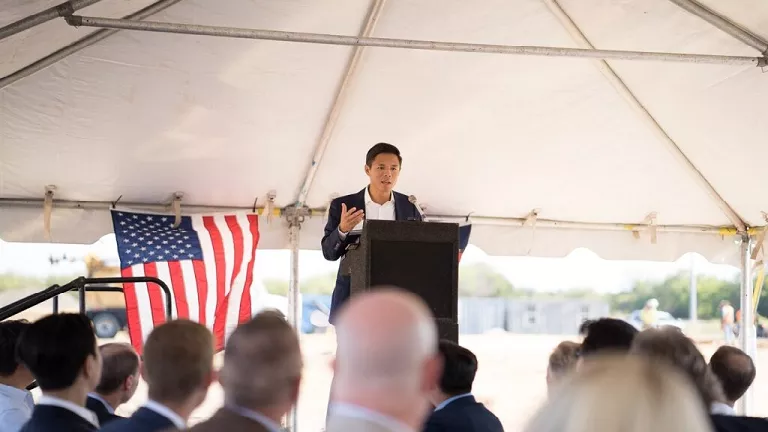Vertically integrated solar and smart energy developer Qcells has announced plans to deploy three more projects following the start of construction on the first standalone battery energy storage system (BESS) to be deployed in the United States.
The company and renewable energy developer Summit Ridge Energy have announced that they are developing three independently deployed battery storage systems in New York.
According to industry media reports, Qcells said it has completed a $150 million financing transaction and started construction of its 190MW/380MWh Cunningham battery storage project in Texas, the first time the company has deployed a standalone battery storage system.
The company said the revolving credit facility, secured by lead arrangers BNP Paribas and Crédit Agricole, will be used for the deployment of its future projects and applied to the Cunningham energy storage project.
The three battery storage projects in New York City’s Staten Island and Brooklyn are much smaller, with a combined size of 12MW/48MWh. Revenue from the three projects will come from a different business model than the Texas project and will enter the state’s Electric Reliability Commission of Texas (ERCOT) wholesale market.
Instead, the projects join New York’s Value in Distributed Energy Resources (VDER) program, where the state’s utilities pay distributed energy owners and operators compensation based on when and where power is supplied to the grid. This is based on five factors: energy value, capacity value, environmental value, demand reduction value and location system mitigation value.
Summit Ridge Energy, a Qcells partner, specializes in community solar and energy storage deployments, and a number of other facilities have already joined the program. Summit Ridge Energy has a portfolio of more than 700MW of clean energy projects operating or developing in the United States, as well as more than 100MWh of standalone energy storage projects that only started developing in 2019.
Under the terms of the three-year cooperation agreement signed by both parties, Qcells will provide the hardware and software for the energy storage system. The company said it would rely on the energy management system (EMS) it acquired in late 2020 when it acquired Geli, a developer of U.S. commercial and industrial (C&I) energy storage software.
The Geli software will be able to predict peak energy demand on the New York State Grid Operator’s (NYISO) grid, exporting stored power at these times to support stable operation of the grid. The projects will allegedly be the first in New York to intelligently address scheduling issues during peak periods.
“The energy storage opportunity in New York is significant, and as the state continues its transition to renewable energy, independent deployment of energy storage will not only support grid resilience, but also help reduce Dependence on fossil fuel peaking power plants and help regulate grid frequency.”
New York has set a goal of deploying 6GW of energy storage on the grid by 2030, as New York Governor Kathy Hochul noted when she recently announced funding for a series of long-duration energy storage projects and technologies.
At the same time, decarbonization and improved air quality need to be driven by reducing reliance on fossil-fuel peaking power plants. So far, replacement plans have focused on building large-scale battery storage systems with a duration of four hours, typically 100MW/400MWh in size, with only a handful of projects being developed so far.
However, distributed battery storage systems like those deployed by Qcells and Summit Ridge Energy could be a complementary way to quickly bring clean energy to the grid.
Construction work on the three projects has begun, with commissioning expected in early 2023.
Post time: Oct-12-2022







